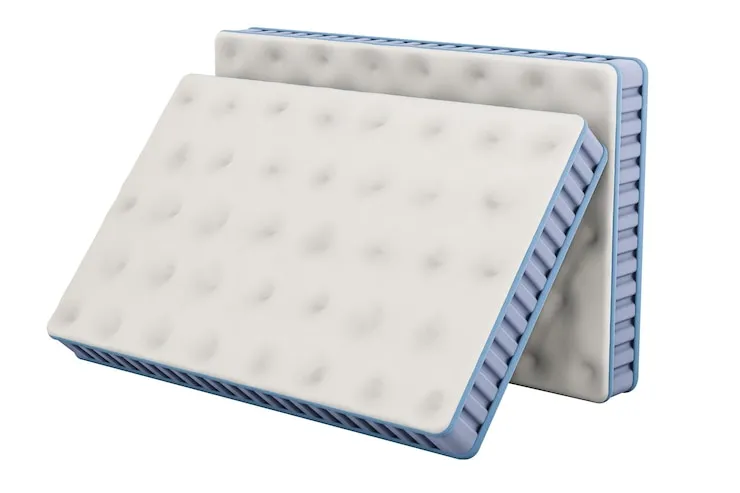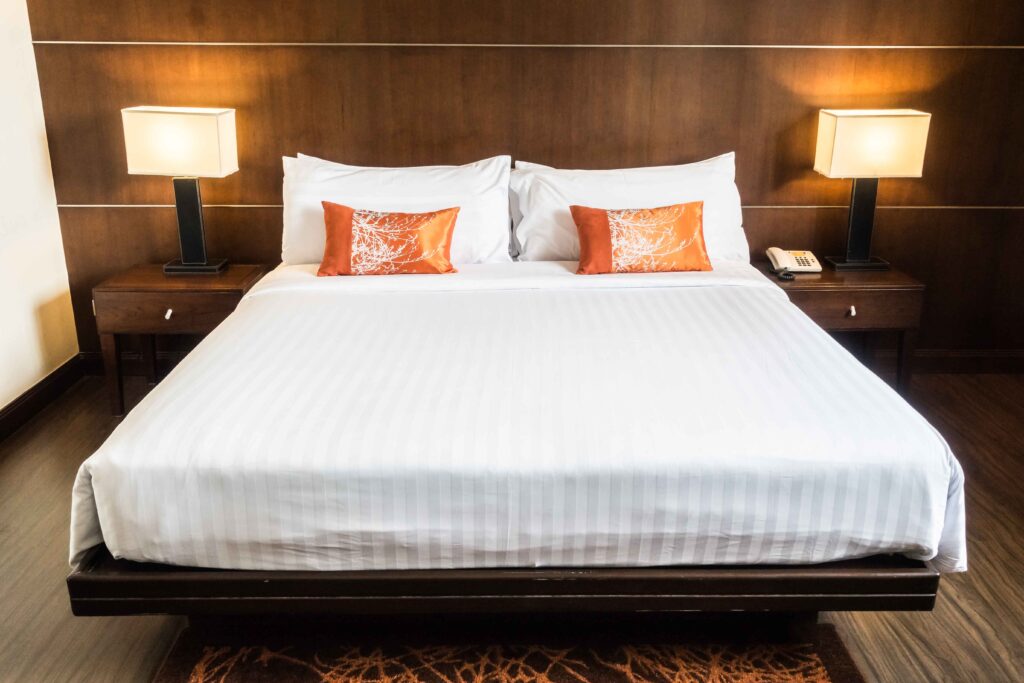
When it comes to choosing a mattress, understanding the different types available is essential for a good night’s sleep. One of the most popular and highly recommended options is the pocketsprung mattress. But what exactly is a pocketsprung mattress, and how does it differ from other types?
A pocketsprung mattress features individual springs, each enclosed in its own fabric pocket, which work independently to provide support. This design offers targeted comfort, adjusting to the unique shape and weight of your body. Unlike traditional mattresses, where the springs are interconnected, pocketsprung mattresses reduce motion transfer, making them an ideal choice for couples.
Understanding the various features, such as spring count, firmness levels, and materials used, can help you select the right mattress to suit your personal needs. Now, let’s explore the mechanics, comfort options, and benefits of these popular mattresses in detail.
Structure and Mechanism of Pocketsprung Mattresses
Pocket Springs: How Do They Work?
The core of a pocketsprung mattress is its individual springs, each housed in its own fabric casing. These springs work independently, responding to your body’s movements without affecting the rest of the mattress. This means if you share the bed, you won’t feel your partner’s movements, ensuring uninterrupted sleep.
Spring Count: Does It Matter?
The number of springs in a mattress, known as the spring count, plays a key role in determining the level of support. Mattresses typically range from 1000 to 3000 springs or more. A higher spring count generally means better support and durability. But is a 1000 or 2000 pocket sprung mattress better? While a 1000-spring mattress can provide ample comfort for most people, a 2000-spring mattress offers enhanced support, especially for heavier individuals or those who prefer a firmer feel.
Zoning for Targeted Support
Some pocketsprung mattresses are designed with zoning to provide varying levels of support across different areas of the body. For example, there may be firmer zones for the lumbar region and softer zones for the shoulders, ensuring optimal spinal alignment and comfort.
Edge Support: Why It Matters
Edge support refers to how well the mattress holds up around its perimeter. Good edge support prevents sagging and makes it easier to sit or sleep near the edge of the bed, maximizing the usable sleep surface. This feature is especially important in pocketsprung mattresses, as it contributes to overall durability.
Comfort and Support Features
Firmness Levels: Finding the Right Balance
Pocketsprung mattresses are available in various firmness levels—from soft to medium to firm—catering to different sleep preferences. Side sleepers might prefer a softer feel, while back and stomach sleepers often find more comfort in a firmer mattress.
Comfort Layers: Padding for Extra Cushioning
In addition to the springs, pocketsprung mattresses often feature comfort layers made from materials like memory foam, latex, or natural fillings such as wool or cotton. These layers enhance the overall feel of the mattress, adding cushioning and contouring to complement the spring support.
Orthopedic Benefits: Back and Joint Support
Due to the independent springs, pocketsprung mattresses offer excellent orthopedic benefits. They provide tailored support for the back and joints, making them an ideal option for people with back pain or joint issues.
No Roll Together: Reduced Motion Transfer
One of the standout features of pocketsprung mattresses is the no roll together effect, which prevents motion transfer. This is especially beneficial for couples, as movements on one side of the bed won’t disturb the other person.
Breathability and Temperature Regulation
Unlike foam mattresses, which can trap heat, pocket springs allow for better airflow through the mattress, promoting breathability and keeping the sleeper cool. This makes pocketsprung mattresses an excellent choice for those who tend to sleep hot.
Compared to memory foam or latex mattresses, pocket sprung designs naturally offer superior temperature regulation, as the spaces between the springs facilitate air circulation.
Types of Pocketsprung Mattresses
Hybrid Mattresses: Best of Both Worlds
Hybrid mattresses combine the pocket spring system with additional layers, such as memory foam or latex. This blend offers the bounce and support of springs along with the contouring and pressure relief of foam.
Natural vs Synthetic Fillings: Pros and Cons
When choosing a pocketsprung mattress, you’ll encounter both natural and synthetic fillings. Natural fillings like wool and cotton are breathable and eco-friendly, while synthetic options like polyester tend to be more affordable but may not regulate temperature as effectively.
Turnable vs Non-Turnable: Maintenance Considerations
Some pocketsprung mattresses are turnable, meaning they can be flipped for even wear, extending their lifespan. Others are non-turnable, with a dedicated sleeping side, reducing the need for maintenance but potentially wearing out faster on one side.
Key Benefits of Pocketsprung Mattresses
- Personalized Support: The independent springs adjust to your body’s unique shape, providing tailored support.
- Motion Isolation: The pocket spring system minimizes motion transfer, making it ideal for couples.
- Durability: Pocketsprung mattresses are known for their longevity and ability to maintain their shape over time.
Considerations When Choosing a Pocketsprung Mattress
Spring Count: How to Choose
If you’re wondering whether a 1000 or 2000 pocket sprung mattress is better, consider your weight and comfort needs. A 1000-spring mattress is sufficient for most sleepers, but if you require extra support, especially for heavier body types, a 2000-spring model may be more suitable.
Firmness: Matching Your Sleep Style
Selecting the right firmness is crucial. Back sleepers may prefer medium to firm mattresses for spinal support, while side sleepers might benefit from a softer feel to cushion pressure points.
Allergies: Natural vs Synthetic Fillings
If you suffer from allergies, opt for a mattress with hypoallergenic fillings. Natural materials like wool are often resistant to dust mites, while synthetic options may require special anti-allergy treatments.
Budget: Getting the Best Value
Finally, consider your budget. Pocketsprung mattresses come in a wide price range, and while higher-end models offer more springs and premium materials, there are plenty of affordable options that still deliver excellent comfort and support.
Read More:
Conclusion
In summary, pocketsprung mattresses provide a unique combination of support, comfort, and durability. Their independent spring design reduces motion transfer, making them ideal for couples, while options like hybrid layers and natural fillings cater to a variety of preferences. Whether you opt for a 1000 or 2000-spring mattress, these products are designed to deliver tailored support and improve sleep quality over the long term.
If you’re looking for a mattress that balances affordability with longevity, pocketsprung mattresses are a solid investment in your sleep and overall well-being.
FAQs
Is a 1000 or 2000 pocket sprung mattress better?
A 2000-spring mattress generally provides more support and is better for heavier individuals or those who prefer a firmer feel, while a 1000-spring model can offer good comfort for most people.
What are the disadvantages of pocket springs?
They can be heavier to move and may have a higher price point compared to basic foam mattresses.
Which is better, memory foam or pocket spring mattress?
Memory foam offers contouring and pressure relief, while pocket springs provide more bounce, airflow, and support.
Are pocket sprung mattresses good?
Yes, they offer excellent support, breathability, and motion isolation, making them a great choice for a wide range of sleepers.



